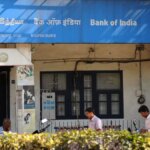[ad_1]
Over half (52%) of Indian Equity Large-Cap funds failed to outperform the S&P BSE 100 index in 2023, despite a strong year for the Indian stock market, according to a new report.
A report by S&P Dow Jones Indices raises questions about the effectiveness of actively managed funds in India. The S&P Indices Versus Active Funds (SPIVA®) India Scorecard for 2023 reveals that a significant portion of actively managed funds underperformed their respective benchmarks across various categories.
Key Findings
Large-Cap Laggard:Over half of Indian Equity Large-Cap funds failed to beat the benchmark, with 52% of actively managed funds underperforming the BSE 100.
ELSS Shines: Indian Equity Linked Savings Scheme (ELSS) funds were the only category where a majority (70%) outperformed their benchmark (S&P BSE 200) across all time horizons measured (1, 3, 5, and 10 years). Just 30% of Indian ELSS funds underperformed their benchmark, the S&P BSE 200
Mid/Small-Cap Woes: A staggering 74% of Indian Equity Mid/Small-Cap funds underperformed the S&P BSE 400 MidSmallCap Index in 2023. This category also fared worst in the long run, with 75% lagging the benchmark over the past decade
The benchmark for Indian Equity Mid-/Small-Cap funds, the S&;P BSE 400 MidSmallCap Index, rose 44. % in 2023, and 74% of active managers underperformed in this index. This funds category also fared the worst in the long run, with 75% of them lagging the S&P BSE 400 MidSmallCap Index over the 10-year period ending December 2023.
Bond Market Blues: The underperformance of actively managed bond funds was even more pronounced. A staggering 96% of Indian Composite Bond funds and 82% of Indian Government Bond funds failed to beat their respective benchmarks in 2023.
According to the report, the S&P BSE India Government Bond Index increased 7.9% in 2023 and less than a fifth of active managers beat the benchmark in this category in 2023, bringing the underperformance rate to 82%.
Similarly, the S&P BSE India Bond Index rose 8.0%, while the underperformance of Indian Composite Bond fund managers was the highest across all categories in the SPIVA India Scorecard, at 96%. An interesting aspect that came to light was how over a 10-year
period just 1 of 116 Indian Composite Bond funds outperformed the index, corresponding to an underperformance rate of 99.1%, the highest underperformance rate across all categories over any time horizon.
The report also considered the global market conditions and how India stood amidst other markets. The SPIVA Year-end 2023 finds India among the leaders of the global stock market rally with all observed equity benchmarks posting gains of over 20% for the year. Indian bond markets also had a strong year, with annual returns in the high single digits (8.0%).
Benedek Voros, Director, Index Investment Strategy at S&P Dow Jones Indices, said “As we reflect on the past year, the market’s vigour is unmistakable, with the S&P BSE 100 and S&P BSE 200 indices posting gains of 23.2% and 24.5%, respectively. This performance underlines a pivotal year for Indian markets, sustained by a macroeconomic environment that has seen interest rates and commodity prices stabilising.”

The SPIVA India Scorecard offers valuable insights for investors in India. While actively managed funds can sometimes outperform the market, a significant portion struggle to do so consistently. Investors considering actively managed funds should carefully evaluate their track record and fees before investing. The report also emphasizes the potential benefits of low-cost index funds, which aim to track the performance of a particular market segment.
First Published: Mar 29 2024 | 2:01 PM IST
[ad_2]
Source link



